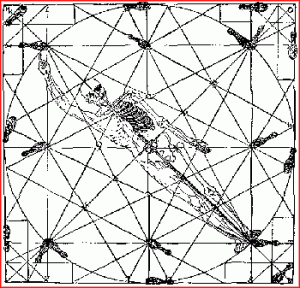anerlich
Brown Belt
If you're talking about depth and breadth, breadth-wise I would contend the curriculum is finite. Three forms, 108+ dummy movements, two weapons forms. Implementing those in chi sao, drills, and sparring. You could argue there's more, but that's the vast bulk of it.
Depth, I would suggest, is not linear, but exponential and asymptotic. You'll take the same time to get from 90% to 99% as you did from 0 to 90%, and the same time to get from 99% to 99.9%. You never get to 100%. Like 99% of all statistics, I made these numbers up on the spot, but hopefully this makes some sense.
I think there is a medium to strike here, which ends up to some degree at least dependent on the student and instructor. You need to avoid the old proverb about experts, learning more and more about less and less until eventually you know everything about nothing.
Masters across most martial arts take decades to reach the level where that honorific applies. You get called Professor in BJJ after 6 years as a black belt, Mestre after around 31 years at black. The BJJ technical spread is WAY bigger than WC and continually expanding. You can't hope for much more than to become competent at an effective subset of it, and understand it enough to extrapolate that knowledge out if confronted with techniques or situations you've not seen before. "Mastering all of Jiu Jitsu" is impossible, the sun will go red giant in about 4.5 billion years and that still won't be enough.
But you should be proficient enough to guide you own training and start teaching others in just about any endeavour within ten years. That seems to fit in with the Malcolm Gladwell Outliers idea, if you subscribe to that.
Jeez, you can get to be a doctor in around a decade. Though a pretty intense decade. Longer for a specialist.
Depth, I would suggest, is not linear, but exponential and asymptotic. You'll take the same time to get from 90% to 99% as you did from 0 to 90%, and the same time to get from 99% to 99.9%. You never get to 100%. Like 99% of all statistics, I made these numbers up on the spot, but hopefully this makes some sense.
I think there is a medium to strike here, which ends up to some degree at least dependent on the student and instructor. You need to avoid the old proverb about experts, learning more and more about less and less until eventually you know everything about nothing.
Masters across most martial arts take decades to reach the level where that honorific applies. You get called Professor in BJJ after 6 years as a black belt, Mestre after around 31 years at black. The BJJ technical spread is WAY bigger than WC and continually expanding. You can't hope for much more than to become competent at an effective subset of it, and understand it enough to extrapolate that knowledge out if confronted with techniques or situations you've not seen before. "Mastering all of Jiu Jitsu" is impossible, the sun will go red giant in about 4.5 billion years and that still won't be enough.
But you should be proficient enough to guide you own training and start teaching others in just about any endeavour within ten years. That seems to fit in with the Malcolm Gladwell Outliers idea, if you subscribe to that.
Jeez, you can get to be a doctor in around a decade. Though a pretty intense decade. Longer for a specialist.

